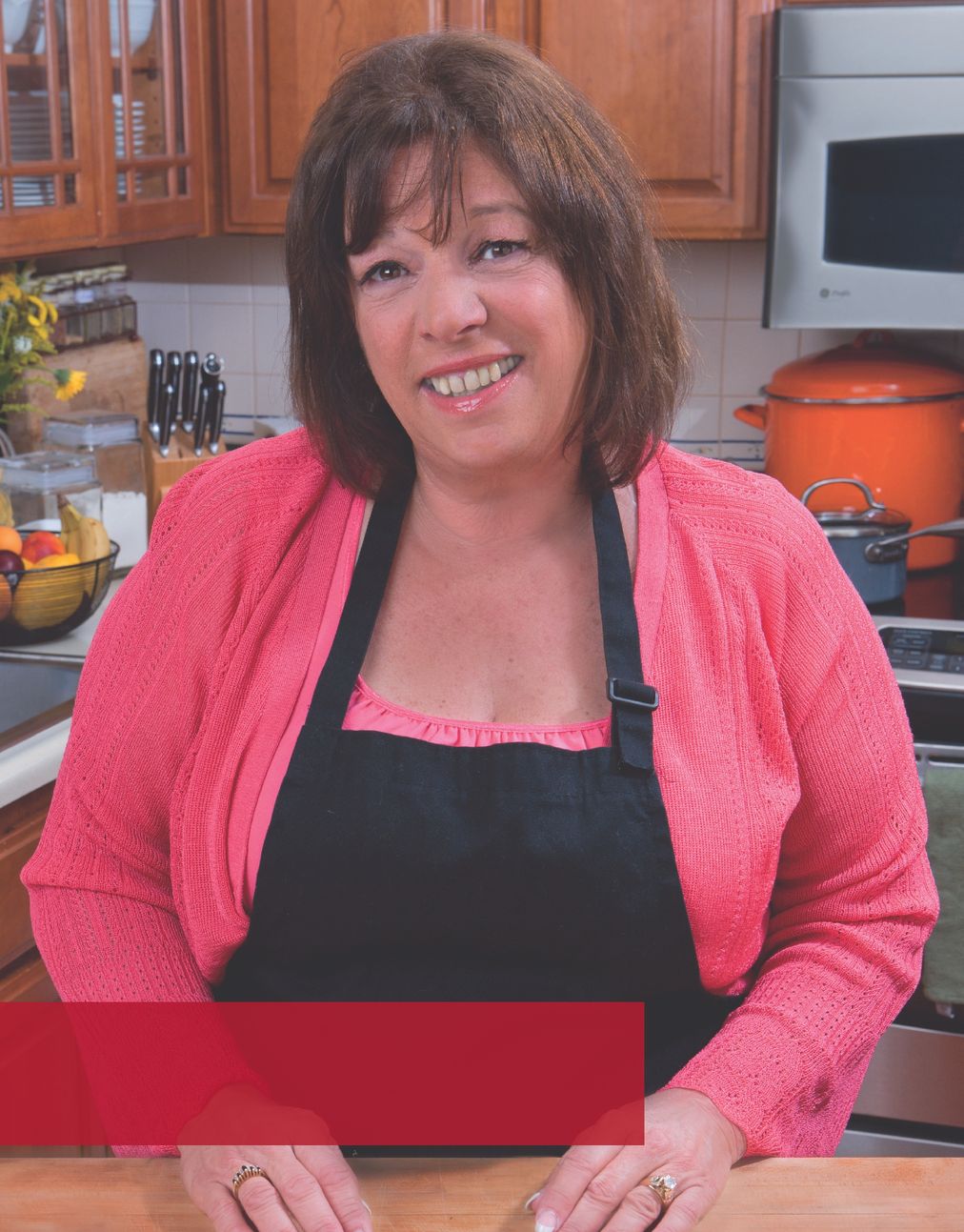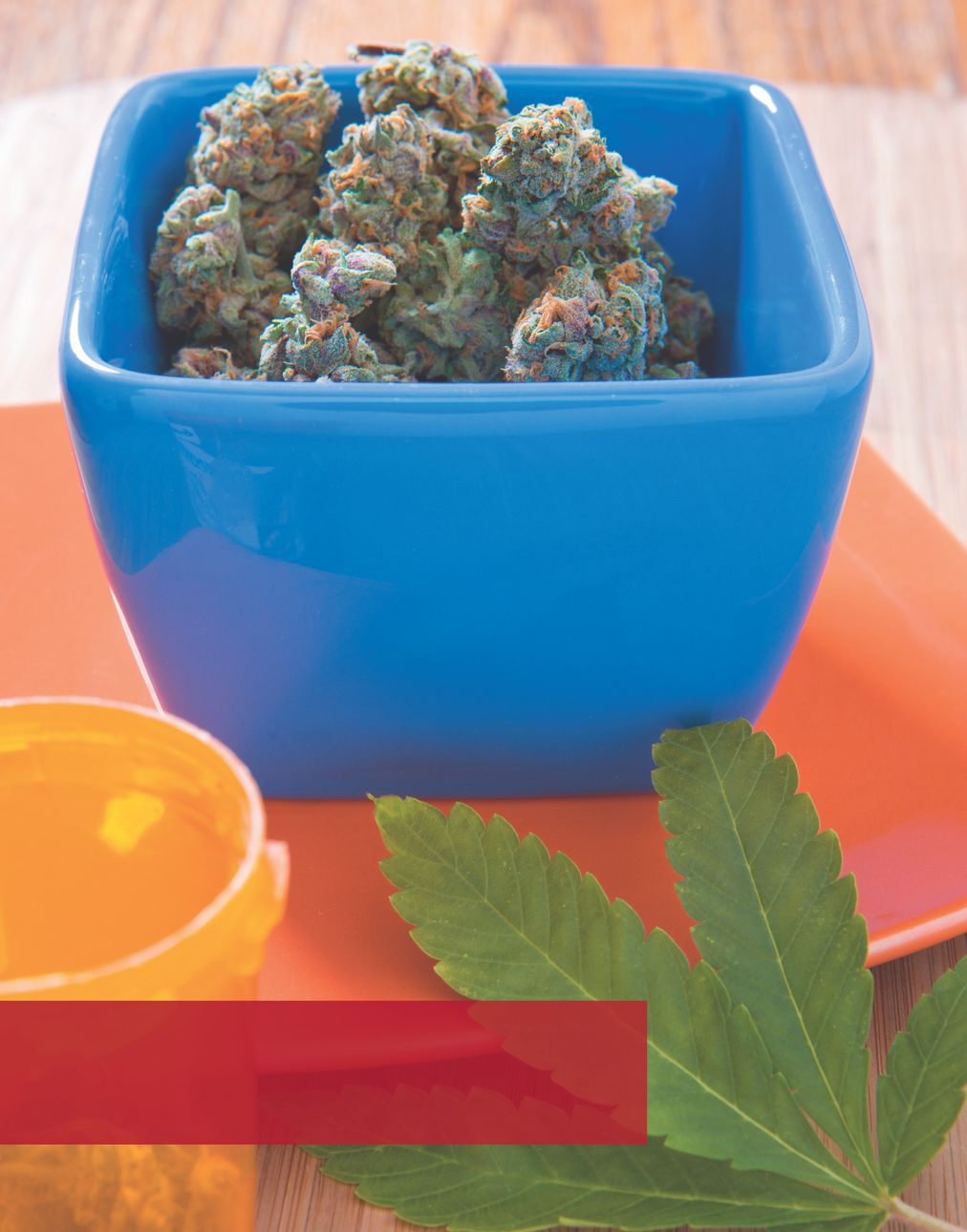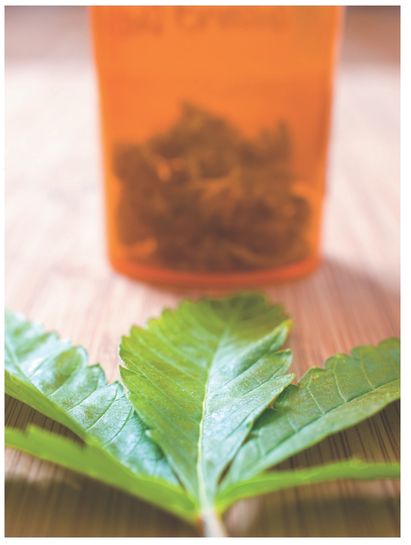Aunt Sandy's Medical Marijuana Cookbook (2 page)
Read Aunt Sandy's Medical Marijuana Cookbook Online
Authors: Sandy Moriarty


Chapter 1
Welcome to Aunt Sandy's Kitchen
Ever since I was a teenager I have loved cooking. My home-style cooking can best be described as “comfort food.” As I began to understand the therapeutic benefits of cooking with marijuana, I learned how these foods can also help to heal a person's mind as well as their body. I am delighted that
Aunt Sandy's Medical Marijuana CookbookâComfort Food for Mind and Body
can help you to learn the secrets of cooking with marijuana so that you too can provide relief and joy with foods from your kitchen.
Aunt Sandy's Medical Marijuana CookbookâComfort Food for Mind and Body
can help you to learn the secrets of cooking with marijuana so that you too can provide relief and joy with foods from your kitchen.
O
ne of the greatest feelings in the world is to cook wonderful food that people love. When that food also has the power to help a person feel better both physically and emotionally, that feeling becomes even greater. Early on I realized the therapeutic value of the cannabis plant, long before the idea came back to the mainstream. I began cooking marijuana foods in 1974 to help my brother relieve his chronic pain. At the time, I was naïve and just added a bag of marijuanaâsticks, seeds, stemsâand all to a cookie recipe and my poor brother had to eat it. Even though the cannabis did its job, the cookie was difficult to eat and had the bitter taste of chlorophyll from the plant material. Over the years I have perfected the process and have developed methods that enhance the taste of the food while lessening the harsh taste of marijuana.
ne of the greatest feelings in the world is to cook wonderful food that people love. When that food also has the power to help a person feel better both physically and emotionally, that feeling becomes even greater. Early on I realized the therapeutic value of the cannabis plant, long before the idea came back to the mainstream. I began cooking marijuana foods in 1974 to help my brother relieve his chronic pain. At the time, I was naïve and just added a bag of marijuanaâsticks, seeds, stemsâand all to a cookie recipe and my poor brother had to eat it. Even though the cannabis did its job, the cookie was difficult to eat and had the bitter taste of chlorophyll from the plant material. Over the years I have perfected the process and have developed methods that enhance the taste of the food while lessening the harsh taste of marijuana.
I've lived in California my whole life and have been a medical marijuana advocate for decades. In 1996 California passed the groundbreaking medical marijuana law Proposition 215, which allowed me to further explore the benefits of marijuana cooking in a safe and legal environment. I now have hundreds of patients that depend on my tasty, medicated foods to make their world a better place.
Currently I prepare my dishes for a select group of medical marijuana dispensing collectives in California. Being involved with these organizations has given me the opportunity to see first-hand how these foods have the power to change a person's life and bring them a level of comfort and healing that other medicines could not. When a patient comes up to me and tells me how one of my lemon bars helped her sleep through the night or manage his pain more regularly, it warms my heart. Those moments keep me working hard in the kitchen to provide the very best medicinal foods to the patients I serve. I now teach my craft to students at Oakland's revolutionary marijuana trade school, Oaksterdam University, so that others can learn to provide their own comfort foods for themselves or for the patients in their lives.
I'm proud to be the mother of three successful daughters who support my vision to provide healing foods to patients. My daughters, a nurse, a chef, and a student, have experienced first-hand my passion for making home-cooked marijuana remedies. They have always been my buddies, and they totally understand the medical benefits of cannabis for patients in need. I thank them for their support, which has helped me to discover my callingâcreating flavorful and effective therapies for an increasingly wider patient base.
My kitchen is a place of compassion and healing. While there are still certain legal and societal hurdles to jump to provide medical marijuana, I do not worry because I know whole-heartedly that what I am doing is right. It is unacceptable for those who oppose marijuana to allow for patients to suffer because of lack of understanding or misinformation about this wonderful and healing plant. Patients deserve to have safe access to reliable and effective marijuana medicines, and I am honored to be able to do my part to help.
By creating
Aunt Sandy's Medical Marijuana CookbookâComfort Food for Mind and Body
, I can help others learn how to cook marijuana foods that help bring relief and wellness to their lives. Most of the recipes in this book are easy enough to make, no matter how experienced you are in the kitchen. By following the simple instructions you will be able to create delicious meals that can also treat and heal a plethora of illnesses and ailments. Always check with your physician to ensure that marijuana food, like any other medicine, is suitable for your condition and safe for you to take with or in lieu of other medications. Cannabis medicines are not for everyone, but many people report them being extremely beneficial.
Aunt Sandy's Medical Marijuana CookbookâComfort Food for Mind and Body
, I can help others learn how to cook marijuana foods that help bring relief and wellness to their lives. Most of the recipes in this book are easy enough to make, no matter how experienced you are in the kitchen. By following the simple instructions you will be able to create delicious meals that can also treat and heal a plethora of illnesses and ailments. Always check with your physician to ensure that marijuana food, like any other medicine, is suitable for your condition and safe for you to take with or in lieu of other medications. Cannabis medicines are not for everyone, but many people report them being extremely beneficial.
Please take the time to read carefully the following chapters before you start cooking. They will inform and educate you about marijuana as a medicine, marijuana and cooking safety, and methods for cooking with marijuana. It is important to take the time to learn about marijuana and how to cook with it safely and responsibly. You will find your personal comfort zone as it relates to proper dosage and the different strengths and potency levels of marijuana medicines.
The recipes are divided into categories that make it easy to find a delicious dessert, starter, soup, main course, side dish or snack to suit your needs. I hope you enjoy making some of my favorite recipes. They are rich in flavor and created with a lot of love. After mastering my marijuana cooking methods and techniques you may also enjoy adding marijuana to your favorite recipe. Most importantly: Always be safe, always be happy, and always remember to make cooking fun. I do hope you find my book to be a reliable and trusted companion in your journey to preparing great foods with marijuana.
Â
From my kitchen to yoursâHappy cooking!
âAunt Sandy
âAunt Sandy

Chapter 2
Marijuana as Medicine
Marijuana medicines have played a role in human culture for thousands of years. The active ingredients in the marijuana plant make it beneficial for many different medical conditions. It is a safe, effective, and most importantly, a natural remedy that has proven to be helpful in treating pain afflictions, combating nausea, assisting in digestion, limiting seizures, increasing appetites, and more.
T
HC is the most recognized in a group of cannabinoids and constituents found in marijuana. It has shown to be neuroprotective, reduce the aggressiveness of several cancers, and in its raw form is both antimicrobial and an antioxidant. Most of the other cannabinoids are found in smaller but varying quantities, and have virtually no effect upon the “high” or euphoric effect, other than perhaps CBD. Cannabidiol, or CBD, does mitigate the sometimes dysphoric (unwanted or uncomfortable) effects and can reduce the “mind high”. CBD has shown to greatly improve the “body effects” by binding to CB2 receptors that are found predominately in body organs and muscle tissue, helping those patients that suffer from muscle spasms and disorders. CBD also has therapeutic value because of its anti-inflammatory activities, is neuroprotective, and reduces metastasis in breast cancer. THC and CBN bind to the CB1 receptors in the brain, which affect the uptake of serotonin. This is why marijuana can relieve many physical and environmental stresses, and provide a better quality of life.
HC is the most recognized in a group of cannabinoids and constituents found in marijuana. It has shown to be neuroprotective, reduce the aggressiveness of several cancers, and in its raw form is both antimicrobial and an antioxidant. Most of the other cannabinoids are found in smaller but varying quantities, and have virtually no effect upon the “high” or euphoric effect, other than perhaps CBD. Cannabidiol, or CBD, does mitigate the sometimes dysphoric (unwanted or uncomfortable) effects and can reduce the “mind high”. CBD has shown to greatly improve the “body effects” by binding to CB2 receptors that are found predominately in body organs and muscle tissue, helping those patients that suffer from muscle spasms and disorders. CBD also has therapeutic value because of its anti-inflammatory activities, is neuroprotective, and reduces metastasis in breast cancer. THC and CBN bind to the CB1 receptors in the brain, which affect the uptake of serotonin. This is why marijuana can relieve many physical and environmental stresses, and provide a better quality of life.
Because the federal government has so drastically limited marijuana research, there are very few clinical trials on whole plant marijuana. What is known is that hundreds of thousands of patients have confirmed that this plant benefits their medical condition and many use it regularly to relieve symptoms.
HISTORYThe medicinal qualities of this plant trace back through recorded history. Ancient civilizations, including China, Greece, India, and medieval cultures documented cannabis as being a beneficial therapy for humans and even animals. It was a very common treatment throughout the eighteenth and nineteenth centuries in America. Cannabis was the physicians' primary pain reliever until the discovery of aspirin. Cannabis was a prominent part of the US Pharmacopoeia until 1942, and several major pharmaceutical corporations distributed it and held patents for medicines containing cannabis. It was outlawed by the Marijuana Tax Act of 1937 and less commonly used thereafter.
In 1996 California voters passed Proposition 215, which was the first state law to allow patients a legal right to use medical marijuana. Since then many other states have passed similar legislation by voter initiative or the legislative process. In 2009 the US Congress lifted a ban, allowing Washington DC residents legal access to medical marijuana.
In the same year, the United States Department of Justice under the Obama Administration issued a directive for federal enforcement to cease prosecution of those operating in compliance with state law. This was a sea change in policy, after more than a decade of controversial federal enforcement.
A CHANGING LANDSCAPECurrently several countries, including the Netherlands, Canada, Spain, and Italy allow marijuana to be prescribed in its plant form. The American Medical Association (AMA) and the American College of Physicians
(ACP), the world's largest organizations of physicians, have called for the rescheduling of marijuana studies to explore its medical benefits. Medical organizations across the globe have endorsed the medical benefits of marijuana, and it is once again emerging as a legitimate therapy in medical circles.
(ACP), the world's largest organizations of physicians, have called for the rescheduling of marijuana studies to explore its medical benefits. Medical organizations across the globe have endorsed the medical benefits of marijuana, and it is once again emerging as a legitimate therapy in medical circles.
California and other states have marijuana dispensing collectives, or dispensaries, where patients can access their medicines in a clean and safe environment. Patients continue to gain safe access to these medicines while medical professionals, patient activists, and concerned citizens continue to break down the barriers of decades of misinformation, and allow the truth about the benefits of marijuana to come to light. Legal, political, and social changes continue to evolve within the medical marijuana landscape.
MEDICAL MARIJUANA, DOCTORS, AND YOUHow does a patient know if medical marijuana is right for his condition? It is always best to consult with a doctor about taking any medication; cannabis is no different. Because of the limited research or negative bias, it may be difficult to find a doctor supportive of marijuana therapies. If your physician seems to have a knee-jerk negative response it may be worthwhile to get a second opinion. In states where medical marijuana is allowed there are doctors who specialize in this area of alternative medicine. Seeking out a doctor who is knowledgeable about the benefits of medical marijuana will help you clearly understand if this treatment may help with your condition.

Other books
Another Day of Life by Ryszard Kapuscinski
World's End by T. C. Boyle
The Broken Man by Josephine Cox
Magic's Pawn by Mercedes Lackey
The Heretic’s Wife by Brenda Rickman Vantrease
Powder River by S.K. Salzer
What Friends Are For by Lacey Thorn
The Meltdown by L. Divine
Shameless by Jenny Legend
Homecoming (A Boys of Fall Novel) by Shannon Stacey